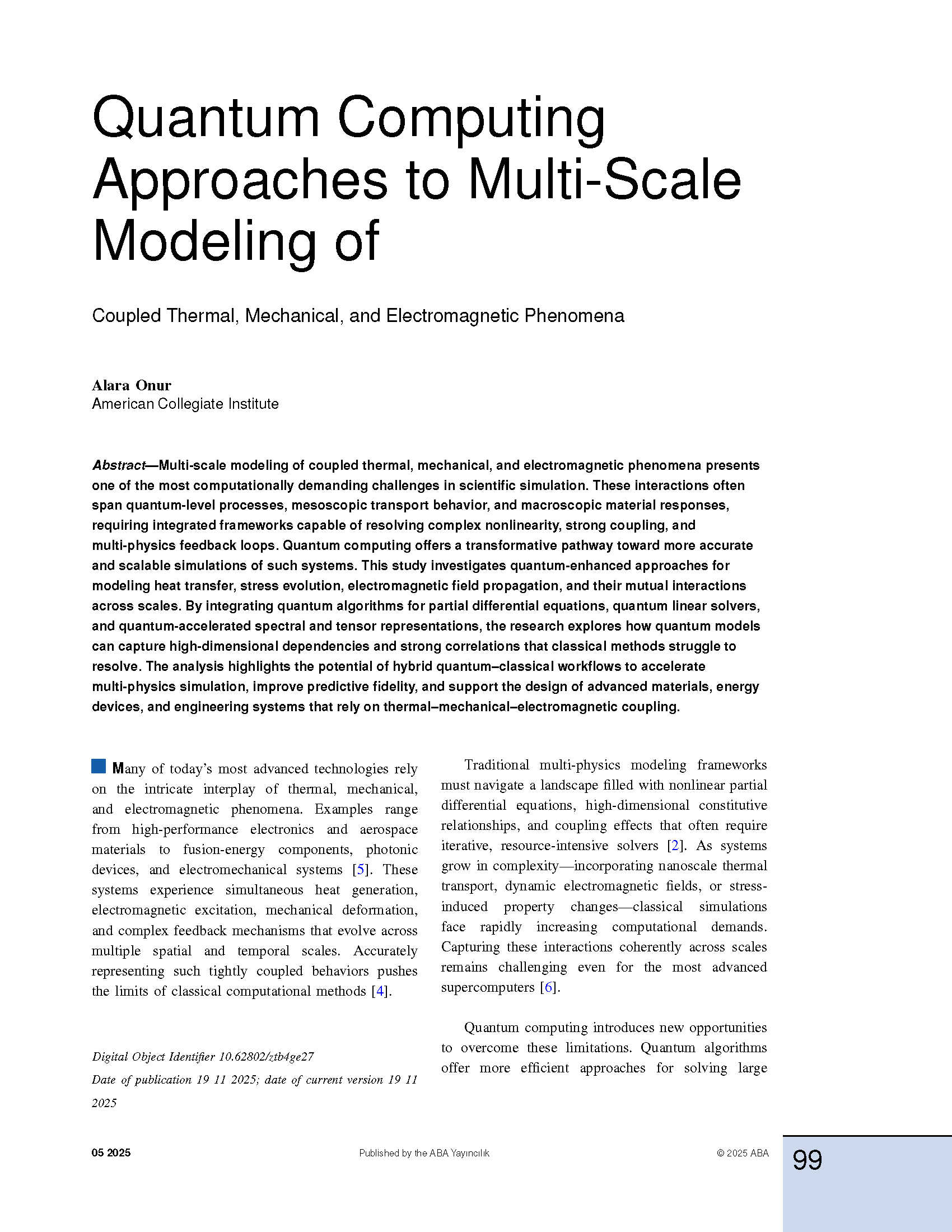Quantum Computing Approaches to Multi-Scale Modeling of Coupled Thermal, Mechanical, and Electromagnetic Phenomena
DOI:
https://doi.org/10.62802/ztb4ge27Keywords:
quantum simulation, multi-scale modeling, thermal–mechanical coupling, electromagnetic interactions, quantum algorithms, multi-physics systems, quantum-enhanced computationAbstract
Multi-scale modeling of coupled thermal, mechanical, and electromagnetic phenomena presents one of the most computationally demanding challenges in scientific simulation. These interactions often span quantum-level processes, mesoscopic transport behavior, and macroscopic material responses, requiring integrated frameworks capable of resolving complex nonlinearity, strong coupling, and multi-physics feedback loops. Quantum computing offers a transformative pathway toward more accurate and scalable simulations of such systems. This study investigates quantum-enhanced approaches for modeling heat transfer, stress evolution, electromagnetic field propagation, and their mutual interactions across scales. By integrating quantum algorithms for partial differential equations, quantum linear solvers, and quantum-accelerated spectral and tensor representations, the research explores how quantum models can capture high-dimensional dependencies and strong correlations that classical methods struggle to resolve. The analysis highlights the potential of hybrid quantum–classical workflows to accelerate multi-physics simulation, improve predictive fidelity, and support the design of advanced materials, energy devices, and engineering systems that rely on thermal–mechanical–electromagnetic coupling.
References
Acciai, M., Arrachea, L., & Splettstoesser, J. (2025). Quantum transport phenomena induced by time-dependent fields. arXiv preprint arXiv:2505.22472.
Kantaros, A., Ganetsos, T., Pallis, E., & Papoutsidakis, M. (2025). From Mathematical Modeling and Simulation to Digital Twins: Bridging Theory and Digital Realities in Industry and Emerging Technologies. Applied Sciences, 15(16), 9213.
Oye, E., & Haneson, M. (2025). Explore hybrid classical-quantum architecture models.
Rima, A., Sellier, A., Lacarrière, L., Vu, M. N., & Millard, A. (2025). Interest of a segregated finite element solver for mechanical multi-physics coupling in geo-materials. European Journal of Environmental and Civil Engineering, 1-18.
Szary, M. J., El-Ahmar, S., Prokopowicz, R., & Ciuk, T. (2025). Reduced dimensionality, elevated tolerance? A perspective on 2D materials for fusion diagnostics. Journal of Physics: Condensed Matter, 37(32), 321501.
Shu, P., Chen, J., Liu, Z., Zhao, H., Li, X., & Liu, T. (2025). Survey of HPC in US Research Institutions. arXiv preprint arXiv:2506.19019.
Yang, Y. (2025). The role of quantum computing in advancing plasma physics simulations for fusion energy and high-energy. Frontiers in Physics, 13, 1551209.


